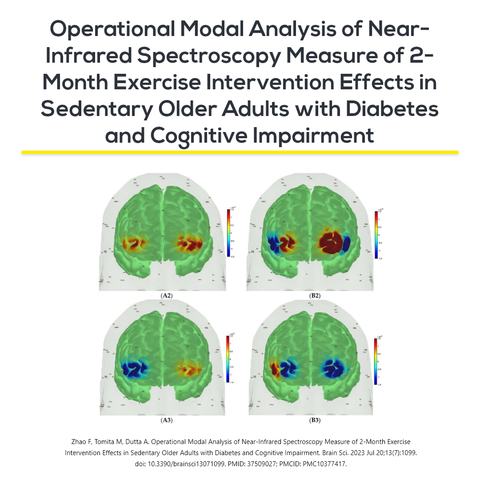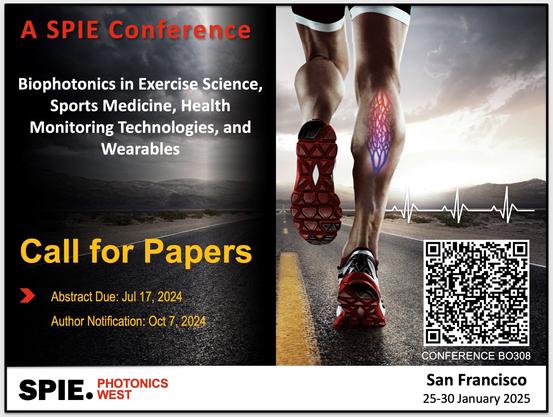🌟 The IFS warmly welcomed Professor Mingchia Yeh from Slippery Rock University in May! His two-week stay included a lecture on exercise science and valuable discussions with our doctoral students. Thanks for the inspiring exchange, Professor Yeh! 🙌 #ResearchCollaboration #ExerciseScience
#ExerciseScience
Africa: Ai-Driven Motion Capture Is Transforming Sports and Exercise Science: [The Conversation Africa] In sport, the margin between success and failure is often measured in milliseconds. It could be a cricketer adjusting their foot positioning, a runner refining their sprint start or a footballer perfecting their passing. http://newsfeed.facilit8.network/TKrjrV #Sports #ArtificialIntelligence #MotionCapture #ExerciseScience #AthletePerformance
(I'm copying this from LinkedIn, from Sean Mullen, an Associate Professor at the University of Illinois. I'll link to Sean if it turns out he's also in the Fediverse. I've asked him.)
Two years later—and the cardiovascular damage from Long COVID is still measurable.
A new study tracked people with Long COVID two years after their initial infection. These weren’t isolated anecdotes. Researchers used gold-standard physiological tools—microneurography, echocardiography, vascular imaging, and cardiopulmonary exercise testing—to quantify what many patients have been describing all along.
The findings are not subtle:
1. Sympathetic Nervous System Overdrive
Participants with Long COVID had 77% more sympathetic nerve bursts than matched controls. That’s not “just anxiety”—that’s measurable autonomic dysregulation.
2. Vascular Dysfunction
Their arteries showed 26% lower flow-mediated dilation, a well-established marker of endothelial dysfunction and cardiovascular risk.
3. Subclinical Heart Damage
Strain imaging revealed subtle impairments in cardiac function—often missed by routine exams but consistent with early-stage heart failure patterns.
4. Impaired Exercise Capacity
On a maximal effort test, Long COVID patients reached *21% lower oxygen uptake*, despite comparable effort. It wasn’t deconditioning. It was systemic impairment.
5. Cellular Markers of Injury and Stress
Blood tests revealed increased oxidative stress, lower antioxidant activity, and higher levels of extracellular vesicles from damaged endothelial cells.
Yes, the study had limitations:
* Small sample (18 Long COVID, 19 controls)
* Cross-sectional design (not causal)
* Focused only on those with severe acute COVID
* Did not include pulmonary function or key inflammatory mediators
But even with these limitations, the findings are consistent with a growing body of evidence:
Long COVID is not just about fatigue—it’s a multi-system condition with real, measurable physiological consequences.
Why does this matter?
Because the world continues to downplay or ignore this. And yet, the biological signals are loud. We cannot “walk this off.” We need research. We need scalable interventions.
One promising candidate?
IMST (Inspiratory Muscle Strength Training)
Just 5 minutes a day of breathing against resistance has shown promising results in reducing sympathetic overdrive and improving vascular health. It’s currently being tested in randomized trials for Long COVID.
---
If you’re a clinician, researcher, or policy leader: This is your call to engage.
Let’s stop debating whether Long COVID is “real,” and start directing our attention—and funding—toward understanding and treating it.
I’m happy to connect with others working in this space. Thanks to Nathaniel Jenkins, PhD, FAHA for pointing out this important paper.
#LongCovid #CardiovascularHealth #PublicHealth #COVID19 #ExerciseScience #HealthTech #VascularHealth
https://journals.physiology.org/doi/abs/10.1152/ajpregu.00055.2025
🚨Weight Loss Facts You NEED to Know (Busting Common Myths)
💪🏾 As a personal trainer with over 20 years in the fitness industry, I’ve coached clients who’ve lost anywhere from 5 to over 120 pounds—and more importantly, kept it off. Today, I want to share insights on long-term weight loss that focuses on fat loss while preserving lean muscle.
#weightloss #strengthtraining #health #nutrition #FactsMatter #science #boston #cardio #fitness #gym #lifestyle #Motivation #fatloss #exercisescience
When it comes to fitness, some questions just never go away. Should you lift heavier weights for fewer reps or go lighter with more? Is cardio better before or after strength training?
https://retroworldnews.com/should-you-work-out-before-or-after-eating/
#WorkoutTiming #PreWorkoutNutrition #PostWorkoutFuel #FitnessTips #HealthyEating #ExerciseScience #NutritionAdvice #WorkoutRoutine #FitnessJourney #MealTiming #HealthAndWellness #ActiveLifestyle #GymLife #FitnessMotivation #EatToPerform #WellnessWarrior #FitFam #StrengthTraining #life
Can AI predict your fitness future? Discover how machine learning is revolutionizing our understanding of exercise habits. #HealthTech #AIinFitness #ExerciseScience
https://geekoo.news/ai-decodes-the-secrets-behind-exercise-commitment/
The Brain Party: How Exercise Boosts Your Mental Performance!
#BrainHealth #ExerciseScience #Neurogenesis #WorkoutBenefits #CognitiveFunction #FitnessFiesta #SynapticStrength #HealthyMind #MentalFitness #BrainParty #Neuroscience #AdenosineMonophosphate #ProteinKinase #NeurotrophicFactors #ExerciseIsMedicine
I’m Nicole, a PhD researcher in Biomechanics at UniSQ, studying exercise-induced muscle damage, repeated bout effects, and neuromuscular adaptations to eccentric exercise. My work explores how muscles adapt, recover, and build resilience, with applications in sports science and rehabilitation. Looking forward to connecting with researchers in biomechanics and exercise science!
📣 Coach Julio's Fit Tip: Targeted fat reduction is a myth. Fat loss happens overall, not in specific areas.
✅ Focus on building sustainable habits that will carry you forward on the path to a healthier you.
#weightloss #facts #humor #gym #knowledge #FitnessGoals #Nutrition #exercisescience #personaltrainer #Boston #education
📣Exercise of the Day: Push-Up to Side Plank (aka the T-Push-Up)!
💪🏾 Watch my amazing online client demonstrate this fantastic exercise for upper body strength, core stability, and coordination. It's fun too! 😅
#fitness #gym #sports #healthequity #workout #StrengthTraining #onlinefitness #personaltrainer #coach #exercisescience #boston #nyc #health
To oxidize more fat during a workout try caffeine, zone 1 or 2 cardio, and specific types of exercise! #FatLoss #WorkoutTips #FatLoss #WorkoutTips #ExerciseScience https://fitbodyscience.com/video/thomas-delauer/how-to-lose-drastically-more-fat-during-a-single-workout-step-by-step
🚴 How do we measure VO2 max? It involves increasing exercise intensity while monitoring oxygen uptake. Once oxygen consumption stops rising, that’s your VO2 max! #ExerciseScience #VO2max scworkout.com
💊 A recent study on L-Citrulline supplementation found that an 8g dose did not significantly enhance resistance exercise performance, muscle oxygenation, or subjective measures like effort and muscle pump compared to a placebo in trained men and women.
-While the study only examined acute effects, it suggests that L-Citrulline may not be effective for boosting performance or muscle pumps.
#Fitness #supplementsthatwork #exercisescience https://evidencebasedmuscle.com/truth-about-l-citrulline-enhanced-exercise-performance/
In their study, Zhao et al. evaluated the impact of a specialized exercise program on elderly individuals with Type 2 Diabetes and cognitive impairments. The research team used fNIRS to measure changes in prefrontal brain activity before and after the training period. The study highlights the potential of targeted physical activity to boost both cognitive function and overall brain health.
🌐Read the full study here: https://publications.artinis.com/publication/zhao-operational-2023/
👉 Why subscribe to #Veohtu?
🆓 Free Access.
🌐 Access Anywhere.
🧠 Expert content.
➡️ To receive updates about #exercisescience and #sportsnutrition and elevate your #endurance #performance, subscribe today at
www.veohtu.com/subscribe
📯 Call for sports science papers!
Present your research utilizing wearable #NIRS to like-minded peers at the next SPIE Photonics West conference. The submission deadline is July 17th (next week)!
🟡 Submit your abstract at 🔗 https://spie.org/PWB/conferencedetails/biophotonics-in-exercise
🔵 The conference will be held from 25-30 January 2025, in the Moscone Center in San Francisco
#sportscience #fnirs #biophothonics #exercisescience #sportmedicine
🚴♂️ A study on identical twins exercising 2 hours daily for 93 days (burning 1000 calories/day) showed an average weight loss of 11 pounds, all from fat mass.
-Despite identical diets and exercise, weight loss varied among twins, highlighting individual variability in response to calorie deficits and exercise.
#fitness #weightloss #exercisescience
https://evidencebasedmuscle.com/is-exercising-more-the-best-way-to-lose-fat/
👉 Why subscribe to #Veohtu?
🆓 Free Access
🌐 Access Anywhere.
🧠 Expert content
➡️ To receive updates about #exercisescience and #sportsnutrition and elevate your #endurance #performance, subscribe today at https://www.veohtu.com/subscribe
🔍💪 Boost Your Lifts with Beetroot?
-A systematic review and meta-analysis delved into dietary nitrate supplementation, commonly found in beetroot shots, revealing a small but noteworthy improvement in muscular endurance, power, and velocity for exercises like back squats and bench presses.
-While promising, these findings call for more research to truly understand the benefits.
🏋️♂️🔬 Breaking Down Myostatin & Exercise.
-A fascinating study sheds light on myostatin's role in muscle hypertrophy. Whether lifting heavy (80% 1-RM) or light (30% 1-RM) weights to failure, the decrease in myostatin was similar.
-The takeaway? Muscle gene expression is uniform, debunking that heavier weight used in workouts is a differentiator for anabolic responses.
#ExerciseScience #MuscleGrowth #MyostatinResearch
https://evidencebasedmuscle.com/myostatin-related-muscle-hypertrophy/






